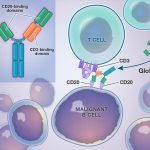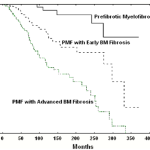Atezolizumab Subcutaneous Administration Preferred by Patients with Non-Small Cell Lung Cancer: IMscin002 Trial Results
Results from the phase 2 IMscin002 trial showed that subcutaneous (SC) administration of atezolizumab is a preferred method of delivery by patients with non–small cell lung cancer (NSCLC). In the crossover study findings, 71% of patients reported being satisfied with the SC administration method, compared to 21% for the intravenous (IV) delivery method.
Patient Satisfaction and Treatment Preference
During the continuation phase of the trial, 79% of patients selected the SC method as their preferred route of administration. Most patients (86%) reported being “very satisfied or satisfied” with SC atezolizumab, while a minority of patients (8.1%) had no preference between the SC and IV forms.
The primary reasons given for preferring the SC option included:
- Less time in the clinic (64.4%)
- More comfortable administration (46.0%)
- Less emotionally distressing treatment (29.9%)
Optimizing Administration Efficiency
Lead study author Federico Cappuzzo, MD, director of medical oncology at Azienda Unità Sanitaria Locale della Romagna -Ravenna in Italy, stated that SC administration of atezolizumab provided an advantage for patients and institutions. The study showed that nurses in the ward were able to prepare the agent three times faster than pharmacists in the pharmacy, and SC atezolizumab does not need to be prepared in sterile conditions and can be prepared in the ward.
Study Design
The IMscin002 study was an open-label crossover study that enrolled patients 18 years or older with EGFR/ALK wild-type NSCLC who had an ECOG performance status of 0 or 1. Patients were randomly assigned to receive 3 cycles of SC atezolizumab at 1875 mg once every 3 weeks for 3 cycles followed by IV atezolizumab at 1200 mg once every 3 weeks for 3 cycles or the inverse sequence for 3 cycles each. During the continuation period following 6 cycles of treatment, patients were allowed to choose between the SC and IV formulations.
Safety Profile
Safety data for SC administration of atezolizumab were consistent with the known profile of atezolizumab, with no new safety concerns identified. Furthermore, switching between the SC and IV formulations of atezolizumab was well tolerated, irrespective of sequence. Rates of infusion-site reactions or infusion-site reaction adverse effects (AEs) did not increase when switching between the SC and IV formulations, irrespective of the first treatment used.
Conclusion
The IMscin002 trial showed that SC administration of atezolizumab is equivalent to IV use and provides a significant advantage for patients and institutions. The results of this study are promising for patients with NSCLC, and the SC option should be considered for future treatment plans.
Related Keywords
- Atezolizumab
- Subcutaneous administration
- Non-small cell lung cancer
- IMscin002 trial
- Preferred method of delivery
- Patient satisfaction
- Treatment preference
- Administration efficiency
- Safety profile
Originally Post From https://www.targetedonc.com/view/subcutaneous-atezolizumab-is-equivalent-to-intravenous-formulation-in-nsclc
Read more about this topic at
Phase 2 IMscin002 Study Shows Patients With NSCLC …
Subcutaneous administration as standard for immunotherapy?

